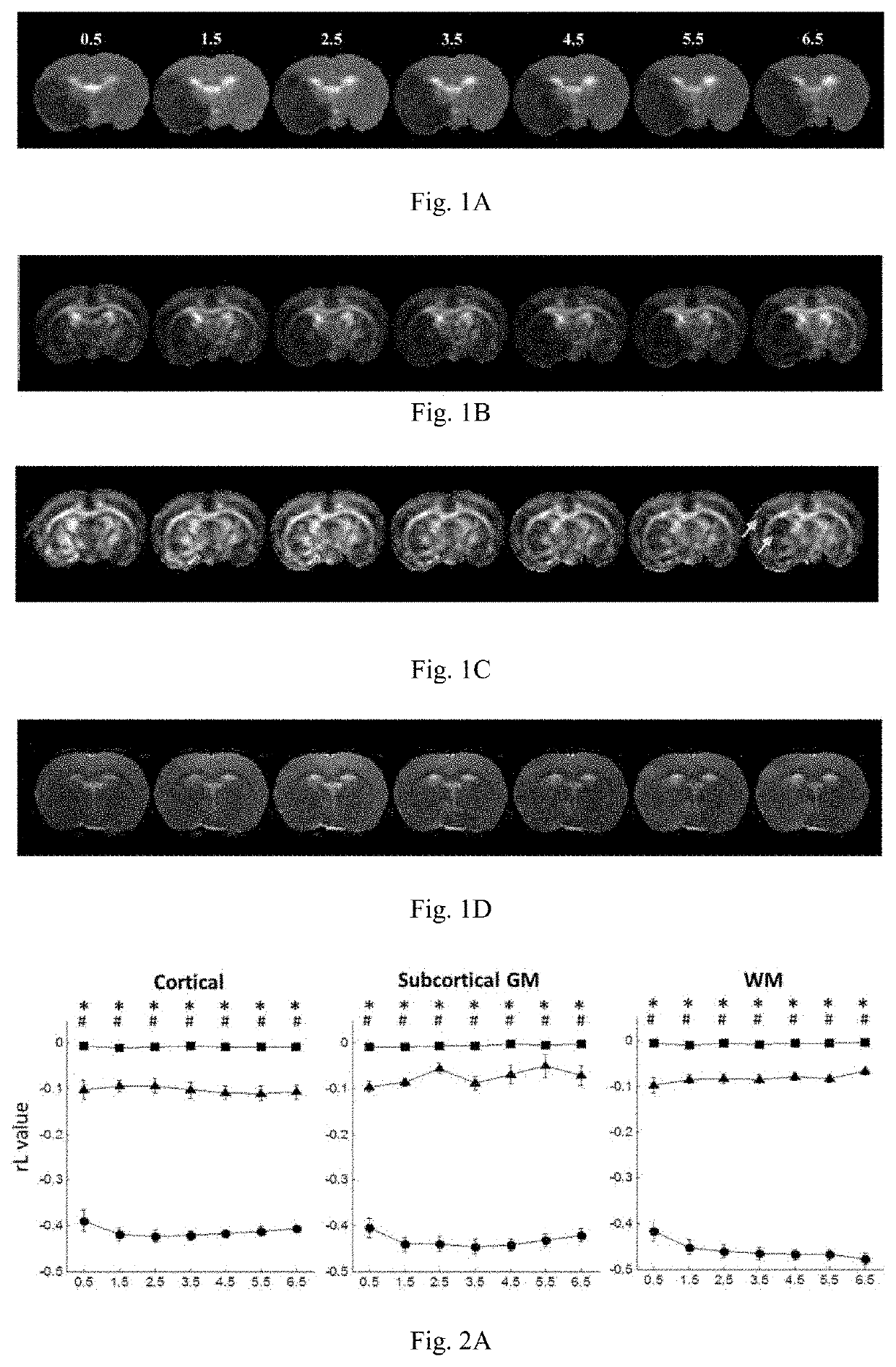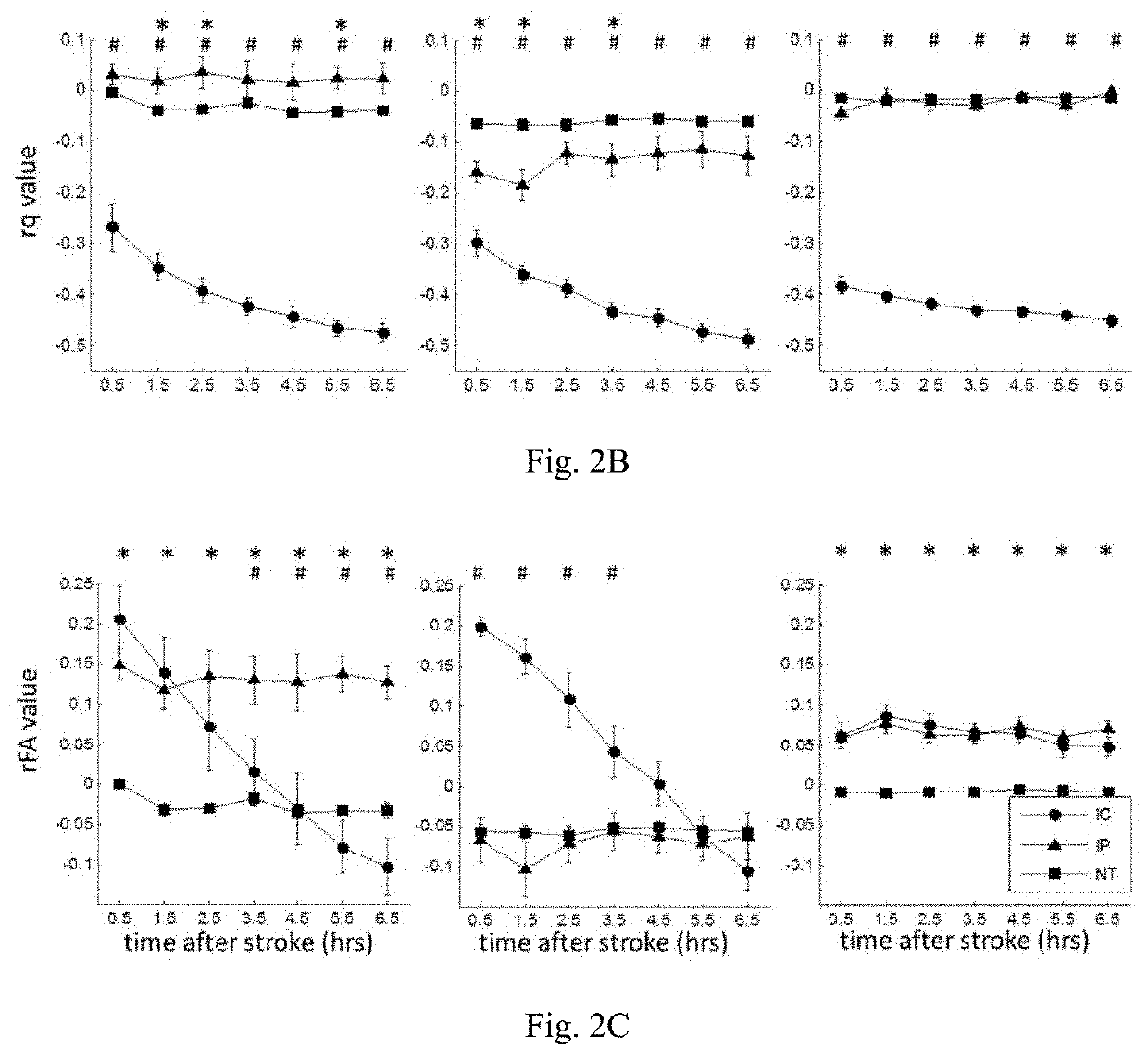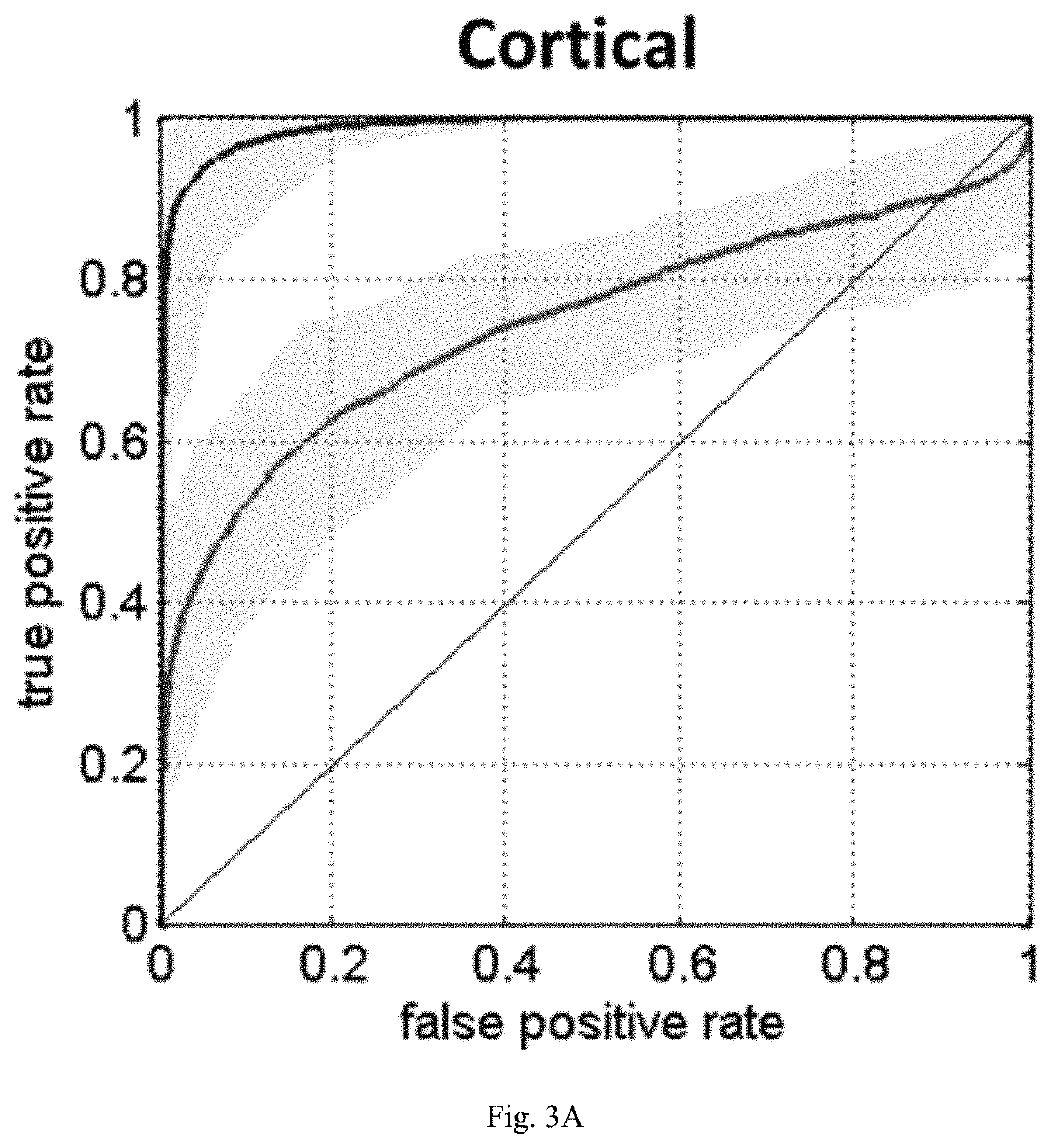Method for determining ischemic status or assessing stroke onset time of a brain region
a brain region and ischemic status technology, applied in the field of magnetic resonance imaging, can solve the problems of increased medical labor, increased cost and risk, and additional errors for patients
- Summary
- Abstract
- Description
- Claims
- Application Information
AI Technical Summary
Benefits of technology
Problems solved by technology
Method used
Image
Examples
examples
Materials and Methods
Animal Preparations
[0117]The experiment procedure was approved by the local Institute of Animal Care and Utilization Committee. Eleven male Sprague-Dawley rats (250-300 g; National Laboratory Animal Center, Taiwan) were prepared by permanent occlusions of unilateral MCA using the intra-luminal suture as proposed by Chiang et al. (Chiang T, Messing R O, Chou W-H. Mouse model of middle cerebral artery occlusion. Journal of visualized experiments: JoVE 2011). Three of eleven rats died within 6.5 hours after MCAo and were therefore excluded from the subsequent analysis. One of the eight included rats died after the 24-hour imaging.
[0118]All MRI animal experiments were performed in a 7T scanner (PharmaScan 70 / 16; Bruker, Germany). The rats were maintained under anesthesia using 1.5-2% isoflurane with an oxygen flow of 1 L / min. Rectal temperature were kept at 37° C. by infusing warm air through the magnet bore. T2-weighted imaging (T2WI), dif...
PUM
 Login to View More
Login to View More Abstract
Description
Claims
Application Information
 Login to View More
Login to View More - R&D
- Intellectual Property
- Life Sciences
- Materials
- Tech Scout
- Unparalleled Data Quality
- Higher Quality Content
- 60% Fewer Hallucinations
Browse by: Latest US Patents, China's latest patents, Technical Efficacy Thesaurus, Application Domain, Technology Topic, Popular Technical Reports.
© 2025 PatSnap. All rights reserved.Legal|Privacy policy|Modern Slavery Act Transparency Statement|Sitemap|About US| Contact US: help@patsnap.com



